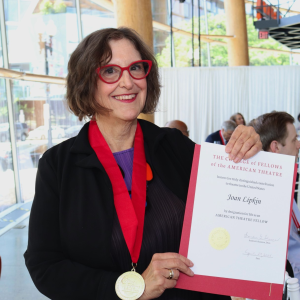Superstitious pilgrims pray on statue by Israeli secularist Kadishman
Published September 16, 2016
(JTA) — An Israeli municipality near Tel Aviv urged young religious women to refrain from touching a statue by the late artist Menashe Kadishman, which some visitors believe has mystical powers.
The unusual statement by Ramat Gan Deputy Mayor Adva Pollak follows pilgrimage in recent weeks to a statue entitled “Birth,” which was placed earlier this year in the art garden of the city’s National Park, the news site nrg Monday.
“We inform the public that this statue has no special powers, and is merely one of many works of art on display in the park,” Pollak was quoted as telling Yedioth Acharonoth. “It would be wrong to attribute such powers to the statue. We welcome visitors who wish to enjoy the art, but I call on them to refrain from lying on it.”
Some superstitious Jews believe that lying on the graves of sages and other religious sites is a purifying act with the power to cure illness or augment fertility. The statue by Kadishman, a secular Jew whose acclaimed oeuvre featured many religious symbols including sacrificial sheep, is visited by crowds of young, religious women who believe touching it will help them conceive, according to Yedioth.
In a eulogy for Kadishman, who died last year, his friend Haim Shtenger wrote that Kadishman “was the secular equivalent of a great rabbi” and a “cultural icon” associated with secularism of Tel Aviv.
One local resident from Ramat Gan told Yedioth that he first noticed the pilgrimage to Kadishman’s “Birth” this summer.
“They huddle around the statue and then lie on it one after another,” he is quoted as saying. Asked for the reason for this behavior, several young women said they believed doing so would help them conceive, have a speedy delivery or both, according to Yedioth. The women were seen reading scripture, especially Psalms, around the statue.
The metal statue features a rough outline of a woman, drawn in infantile style, with large breasts and a smiley face etched into her stomach. The outline forms a surface that sticks out at a 15-degree angle to the statue’s broad base. The female form features the outline of a raven on her head.
The statue is one of 14 Kadishman works on loan from the descendants of the celebrated artist, who died last year at the age of 83. Six of the statues, including “Birth,” were placed at the Ramat Gan National Park this summer.
Kadishman was an internationally-acclaimed artist and his statues and paintings are on display in cities across the world, including London, Berlin, Toronto, Dordrecht, Tokyo and San Juan in Costa Rica. He won the Israel Prize, the Jewish state’s highest distinction for artists, in 1995.














